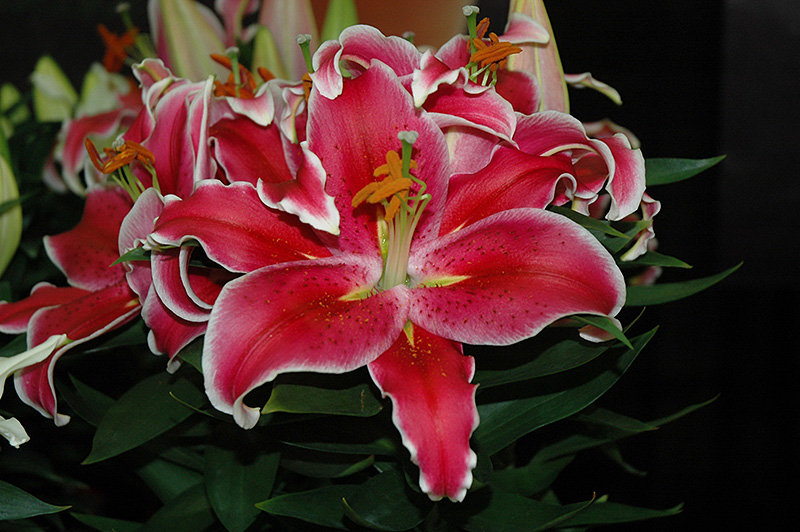Plant Finder
Find the perfect plant for your garden.
Height: 20 inches
Spacing: 12 inches
Sunlight:
![]()
![]()
Hardiness Zone: 4b
Group/Class: Asiatic Hybrid
Description:
A lovely dwarf oriental lily with intensely fragrant blooms that are rose with red tepals edged in white; these beautiful flowers make a spectacular contrast in border plantings and are excellent in containers
Ornamental Features
After Eight Lily features bold fragrant rose trumpet-shaped flowers with red overtones and white edges at the ends of the stems from early to mid summer. The flowers are excellent for cutting. Its narrow leaves remain green in color throughout the season.
Landscape Attributes
After Eight Lily is an herbaceous perennial with a rigidly upright and towering form. Its medium texture blends into the garden, but can always be balanced by a couple of finer or coarser plants for an effective composition.
This plant will require occasional maintenance and upkeep, and should be cut back in late fall in preparation for winter. Gardeners should be aware of the following characteristic(s) that may warrant special consideration;
- Insects
- Disease
After Eight Lily is recommended for the following landscape applications;
- Mass Planting
- General Garden Use
Planting & Growing
After Eight Lily will grow to be about 16 inches tall at maturity, with a spread of 15 inches. When grown in masses or used as a bedding plant, individual plants should be spaced approximately 12 inches apart. It tends to be leggy, with a typical clearance of 1 foot from the ground, and should be underplanted with lower-growing perennials. The flower stalks can be weak and so it may require staking in exposed sites or excessively rich soils. It grows at a fast rate, and under ideal conditions can be expected to live for approximately 10 years. As an herbaceous perennial, this plant will usually die back to the crown each winter, and will regrow from the base each spring. Be careful not to disturb the crown in late winter when it may not be readily seen!
This plant does best in full sun to partial shade. It does best in average to evenly moist conditions, but will not tolerate standing water. It is not particular as to soil type or pH. It is somewhat tolerant of urban pollution. This particular variety is an interspecific hybrid. It can be propagated by multiplication of the underground bulbs; however, as a cultivated variety, be aware that it may be subject to certain restrictions or prohibitions on propagation.
A NetPS Plant Finder tool


